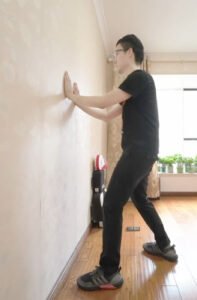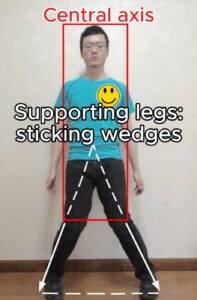This series of articles is the free version of my paid video courses. Paid video courses cost a lot to do, include a lot of information, especially long ones, not just a few clips, or like shorts on YouTube, and I need to give feedback and answer questions for paid students. I make a living by teaching, so please understand that it’s not easy to do free video courses.
However, writing articles is a lot easier to do, so it’s ok to publish some free valuable articles. If you have some experience, you can also learn a lot by reading them, but if you don’t, I’m sorry, articles barely help; then it’s for SEO purposes.
OK, let’s start!
First, we stand upright naturally, and the width of your stance should be a little bit wider than your shoulders. Put your weight on your heels, you may feel you are going to stumble, that’s fine, try to keep the feeling, until someday you won’t be, because it’s better than put your weight on knees in next step, then next step crouch, bend knees, don’t go beyond toes if you look from top or from side, then turn your legs inwards around hip joints, now that’s the werid shape of Ving tsun, Yee Jee Kim Yeung Ma in Cantonese, let’s just call it Ving Tsun stance for English speaker.
So, why is this a weird shape? Are we going to fight like this? Definitely not! This is the most ideal posture for us to train our structural power; it’s for training purposes only! Ving Tsun uses the triangle a lot, we can even call it triangle fist, our 4 limbs are all natural triangles, the triangle is the most stable shape, we all know that, in Ving Tsun’s Trigonometry and biomechanics, this is our engine, our power source, we use triangle to get power from the ground to attack, and defend, neutralize, deflect attacks, it’s about the nature of it, not about some techniques, certain movements.
The most important thing is your hip/pelvis/ bottom; it doesn’t stick out. If we do a back stance version of it, we will see it much more clearly; the calf is like a wedge, sticking to the ground, and we are like a coil spring right now, the springy force, elasticity. From your head to your bottom, they form an abstract central axis, which we will talk about later. If you stick out your bottom, when you punch, the recoil won’t be delivered to the ground, the coil spring of your body won’t be rooted, stable, and steady.
To be continued…


